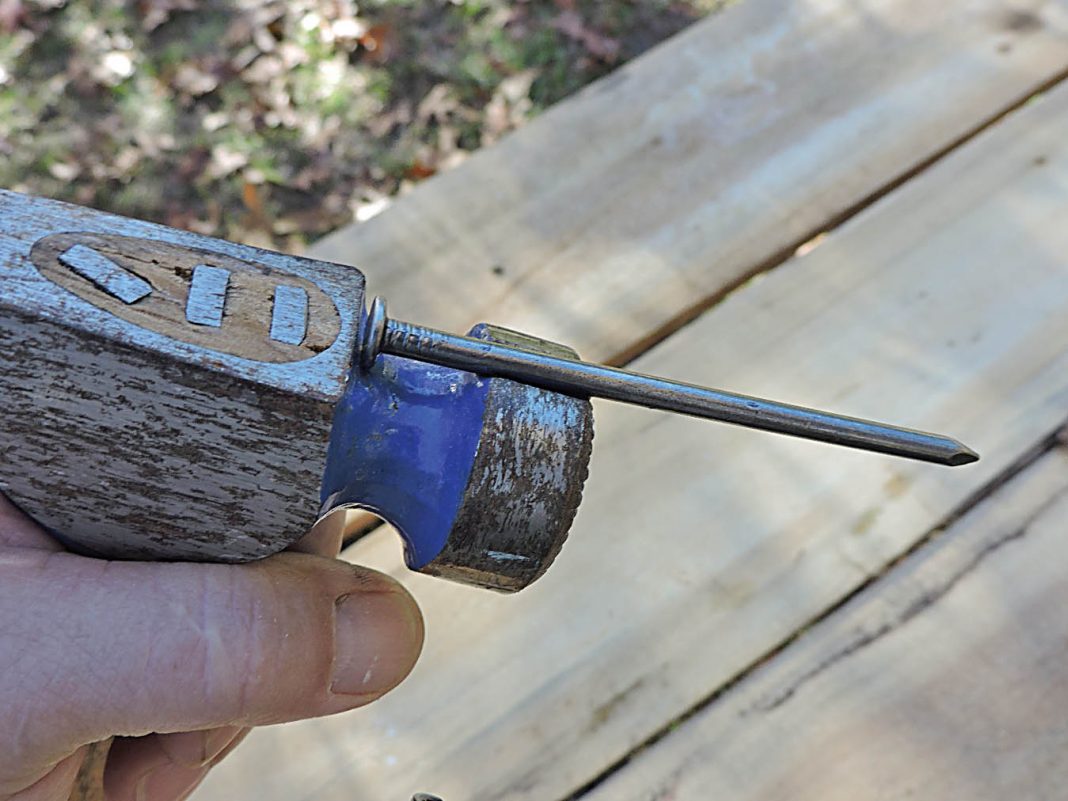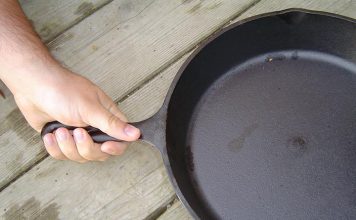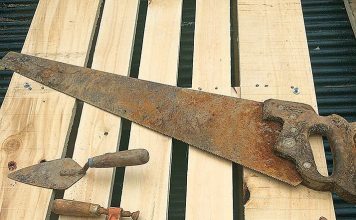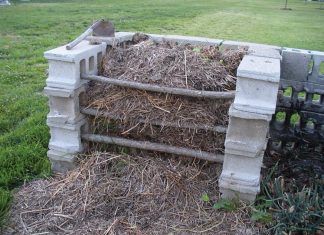By R.E. Rawlinson
Scottish writer and philosopher Thomas Carlyle observed that “Man is a tool using animal … without tools he is nothing, with tools he is all.” In the modern world we are awash in tools and we take them for granted, but if we take a closer look we can appreciate how powerful they have made us. Let’s consider the first tool of all — the hammer, which we can define as a metal head attached perpendicularly to a handle.
Who can say what caused our forebears to need a way to apply a heavy impact in a focused way, perhaps to break open a bone to reach the marrow or a nut for its meat? The first consideration was to use a material appropriate to the object being struck. In the bone and nut example a stone would be an obvious choice, a larger one for the bone and a smaller one for the nut. Later they improved the effectiveness of their hammer by attaching the stone to a handle which increased the impact force by leverage and protected the hands from the shock of the blow. These are the same considerations we need to think about today — what are we hitting, why are we hitting it, and how hard do we need to hit it?
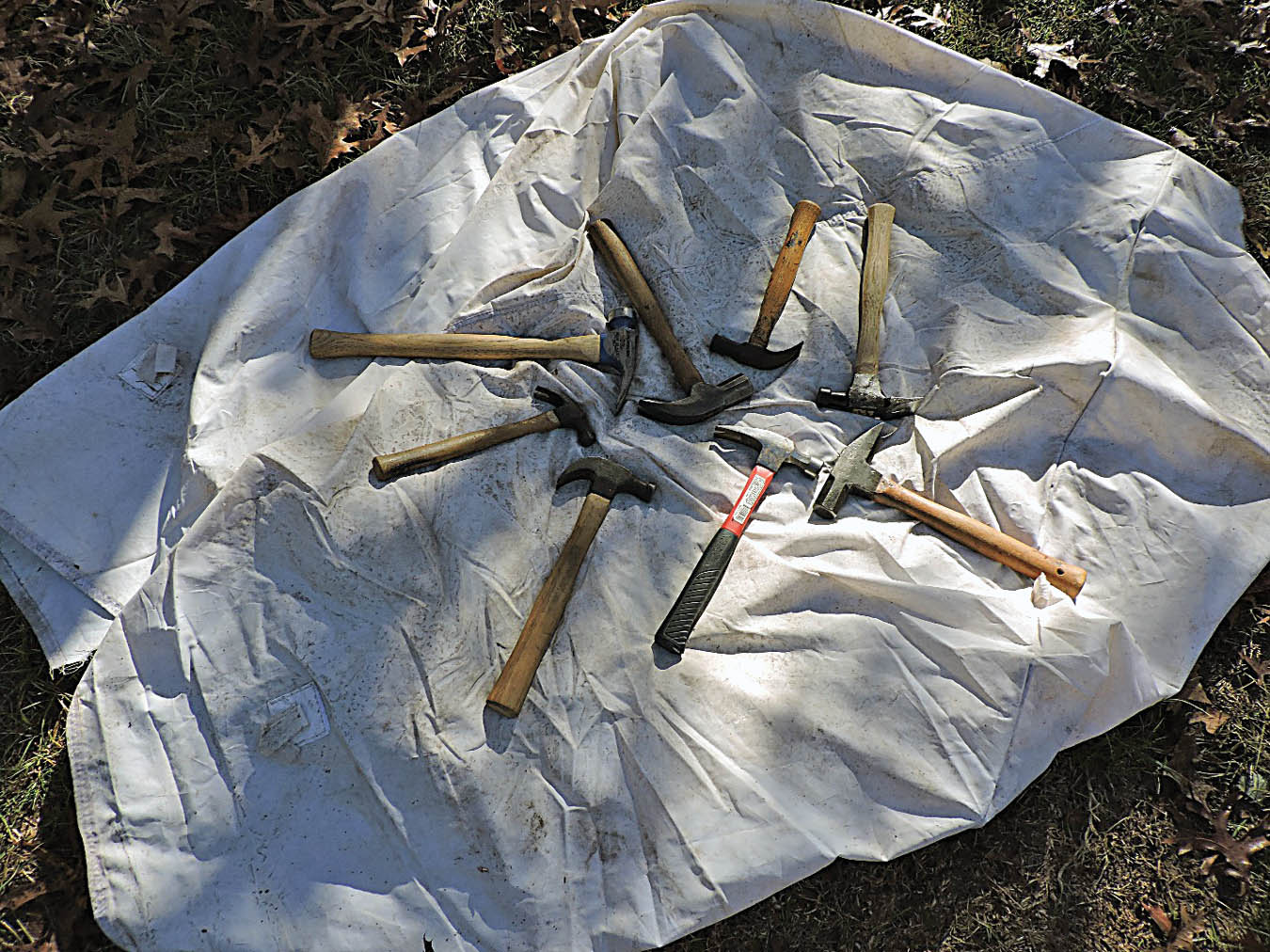
Claw hammers were developed hundreds of years ago.
What are we hitting?
Claw hammers were developed along with iron nails hundreds of years ago; those early nails were made by hand one by one and valued accordingly so a means of removing and reusing nails was incorporated into the same tool used to drive them. Common nails are fairly soft so claw hammers are made harder so they will not be damaged by striking thousands of nails; this also makes them brittle enough to chip if used on harder materials like stone or hardened steel.
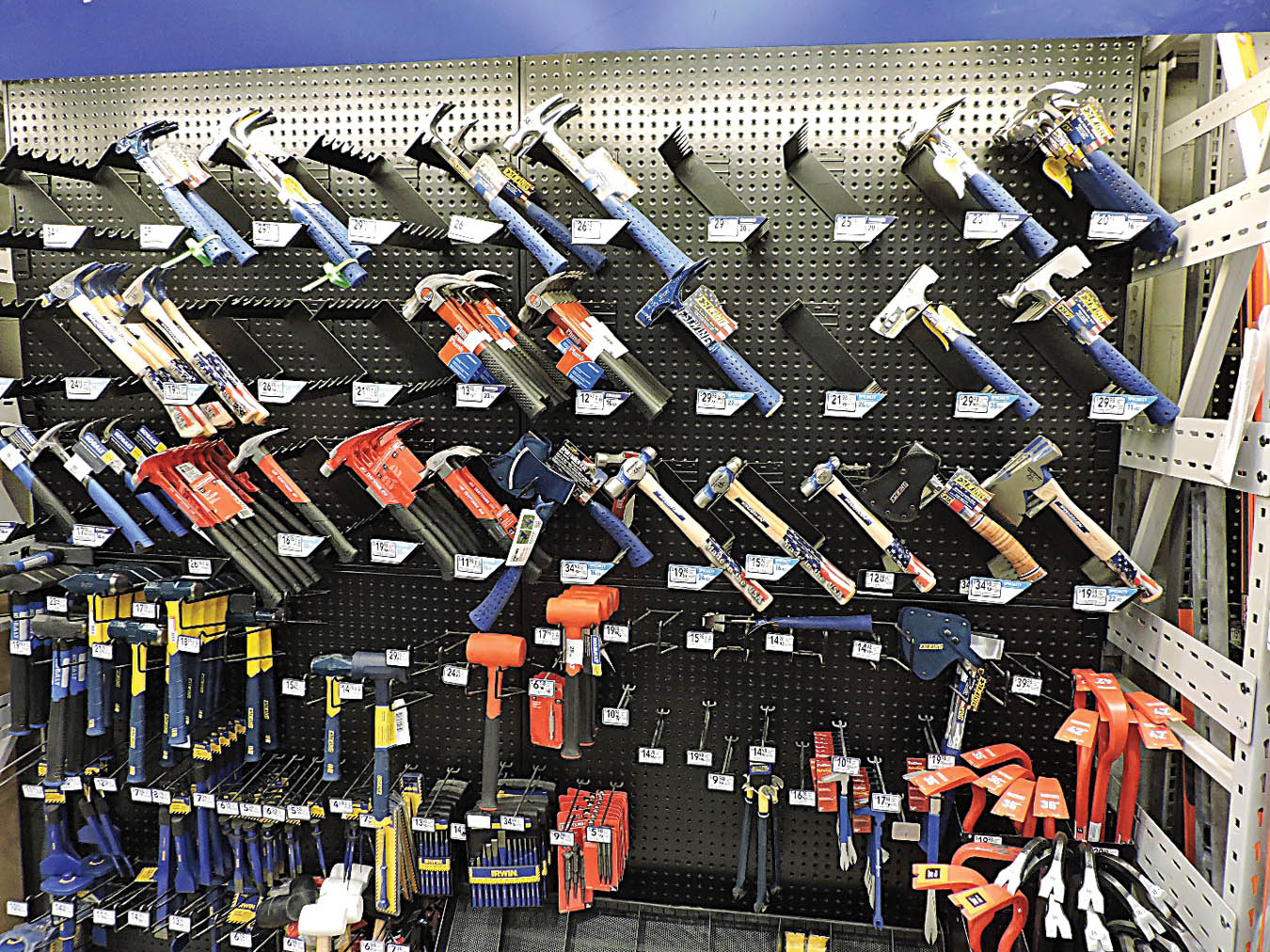
A wall of various hammers at a hardware store
Why are we hitting it?
The point of striking a nail is obviously to drive it through a piece of wood into another piece, thereby connecting the pieces. The thing is, not all nails or woods are the same. A small finish nail used to attach a bit of molding to a cabinet calls for a small, light hammer to drive the nail without smashing the fingers holding it and with a smooth face that won’t damage the surface when fully sinking the nail. At the other end of the spectrum are the framing hammers which are designed to sink large nails and spikes into thick lumber with a minimum number of blows.
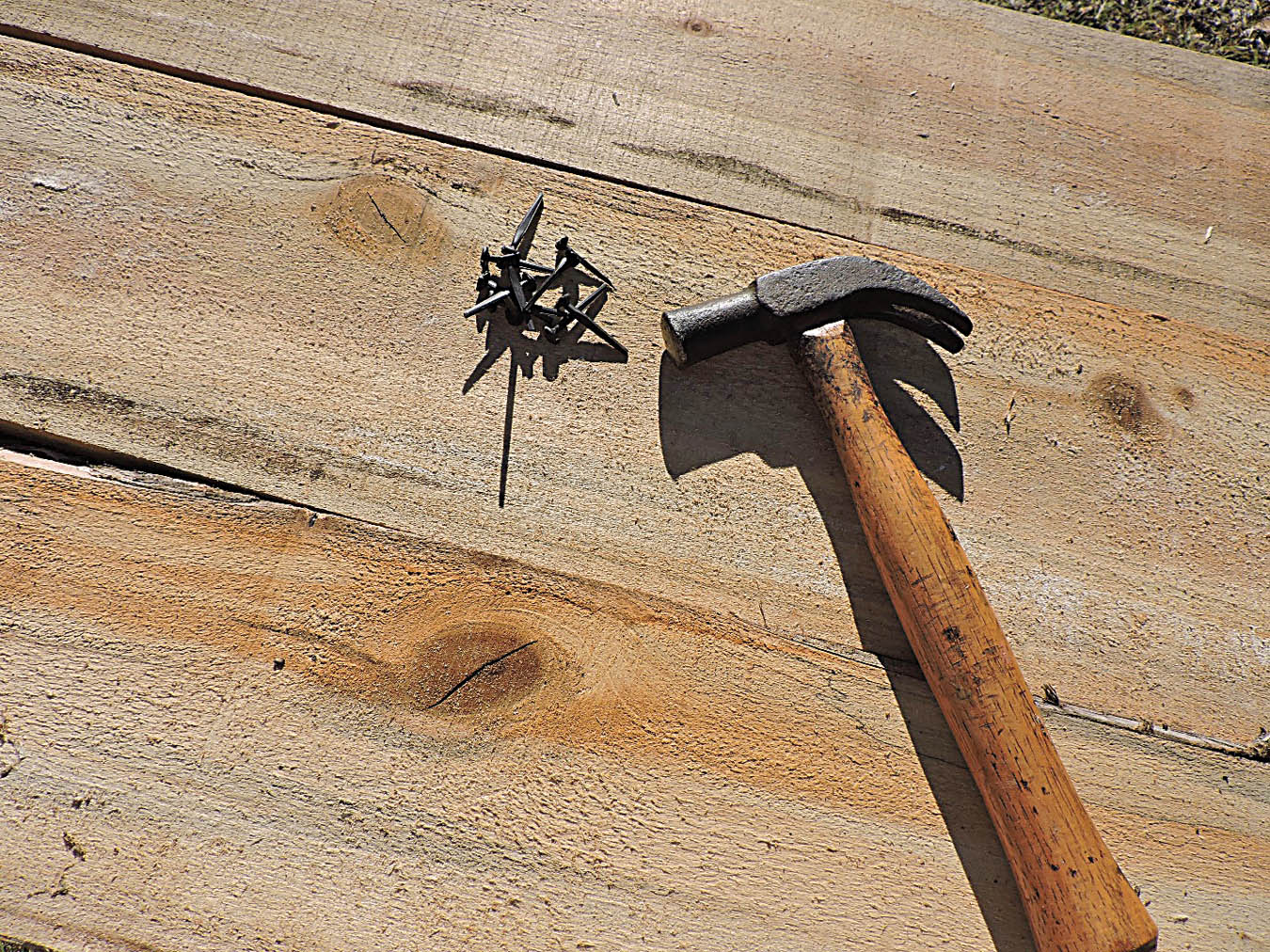
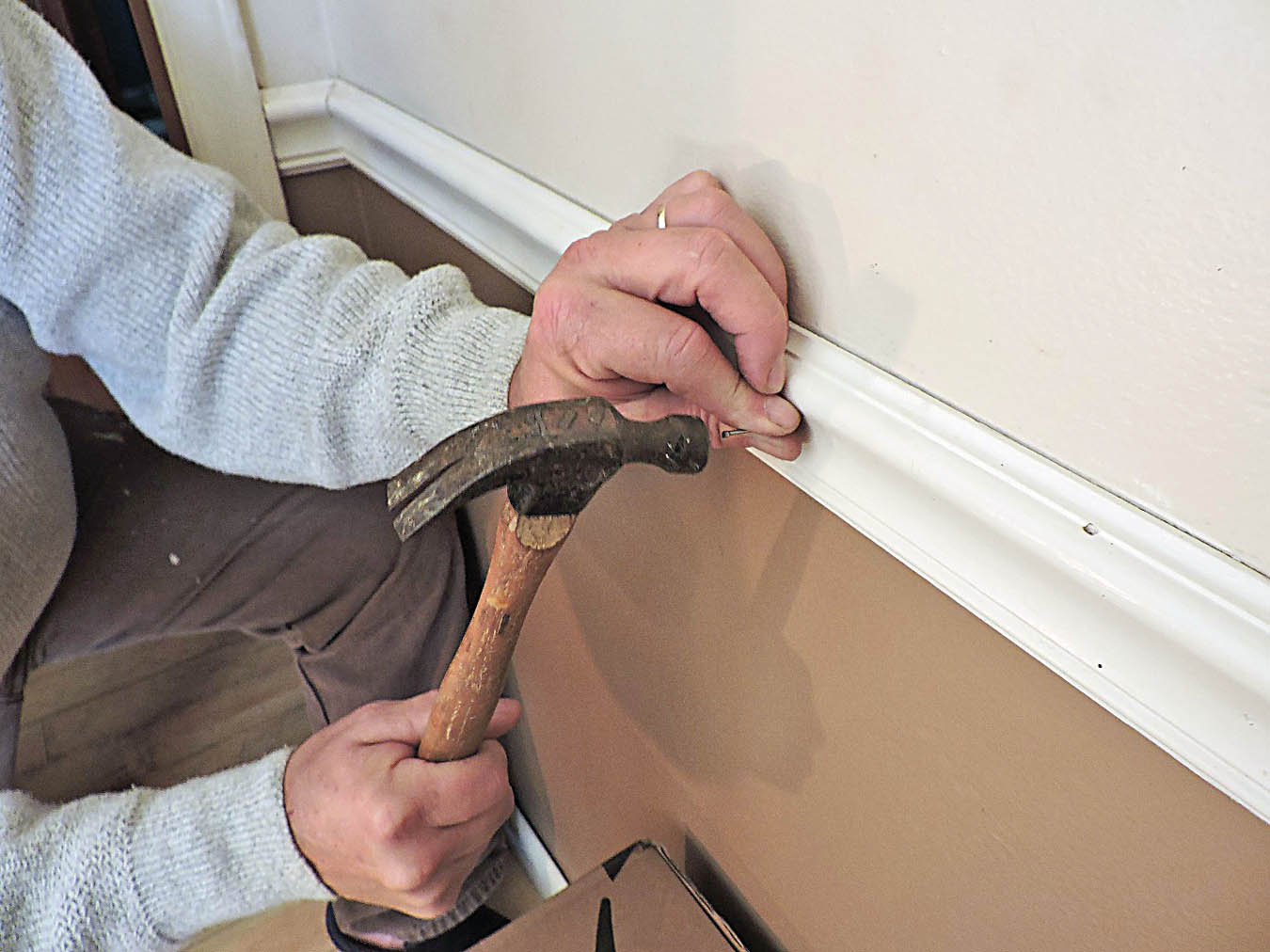
The force or energy required to drive a small finish nail is much less than that required to sink a large coated framing nail.
How hard do we hit it?
The force required to drive the small diameter finish nail is much less than that required to sink the large coated framing nail. The way we control striking force is either by the weight of the hammer head or the speed with which we swing the hammer. Too much force applied to the finish nail will cause its small diameter shaft to bend, whereas not enough force applied to the framing nail is ineffectual.
We can adjust impact force easily by swinging faster to increase the impact or slower to reduce impact but there are limits. We simply can’t swing a 6-ounce tack hammer fast enough to sink a framing nail.
Hammer weight is important. Framing hammers will typically weigh 20 ounces or more, although there has recently been a trend of light weight titanium hammers that rely on speed of swing. These hammers are expensive and, in my opinion, a way to reduce the weight of the tool belt rather than a more efficient nail driver.
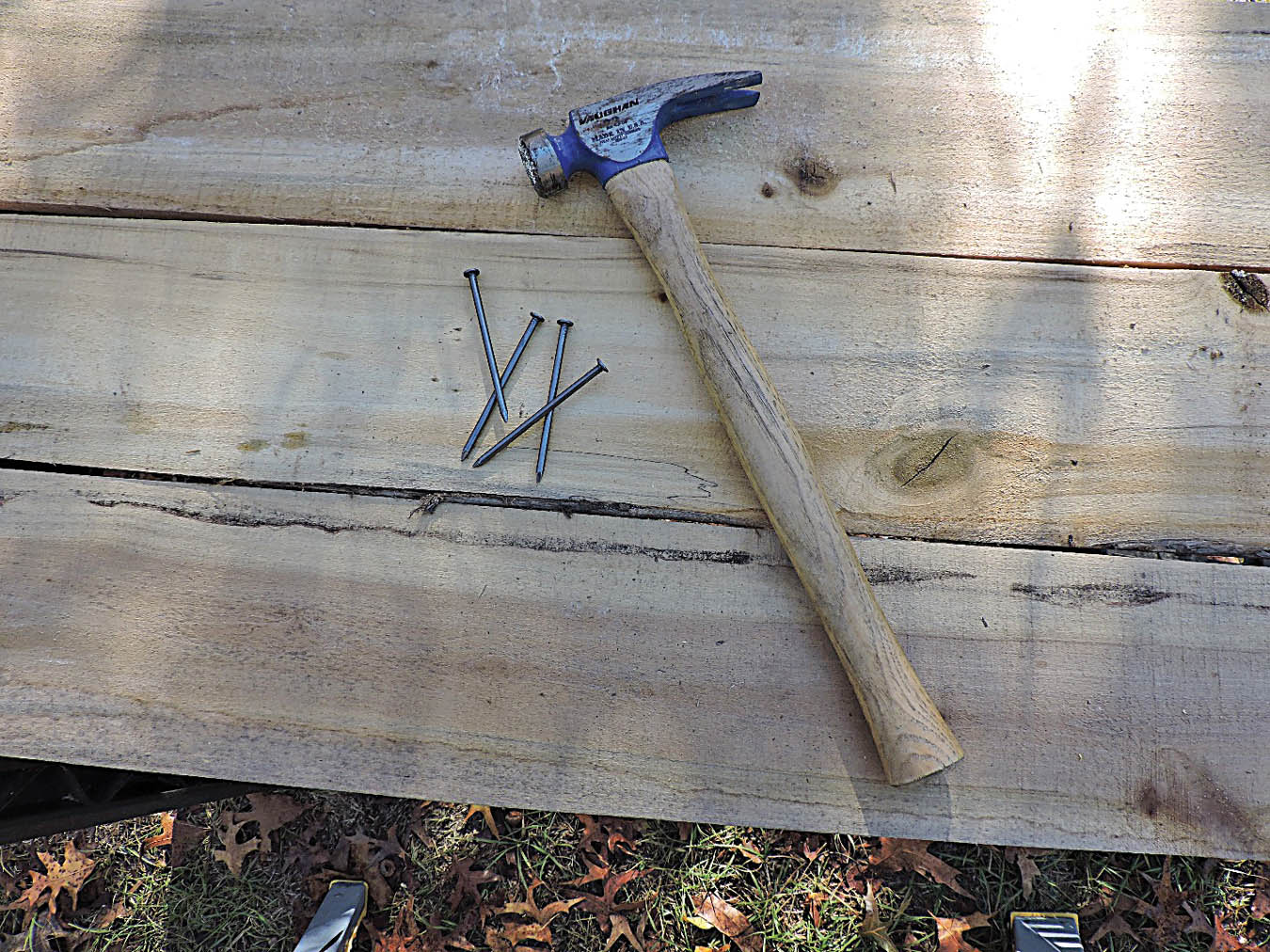
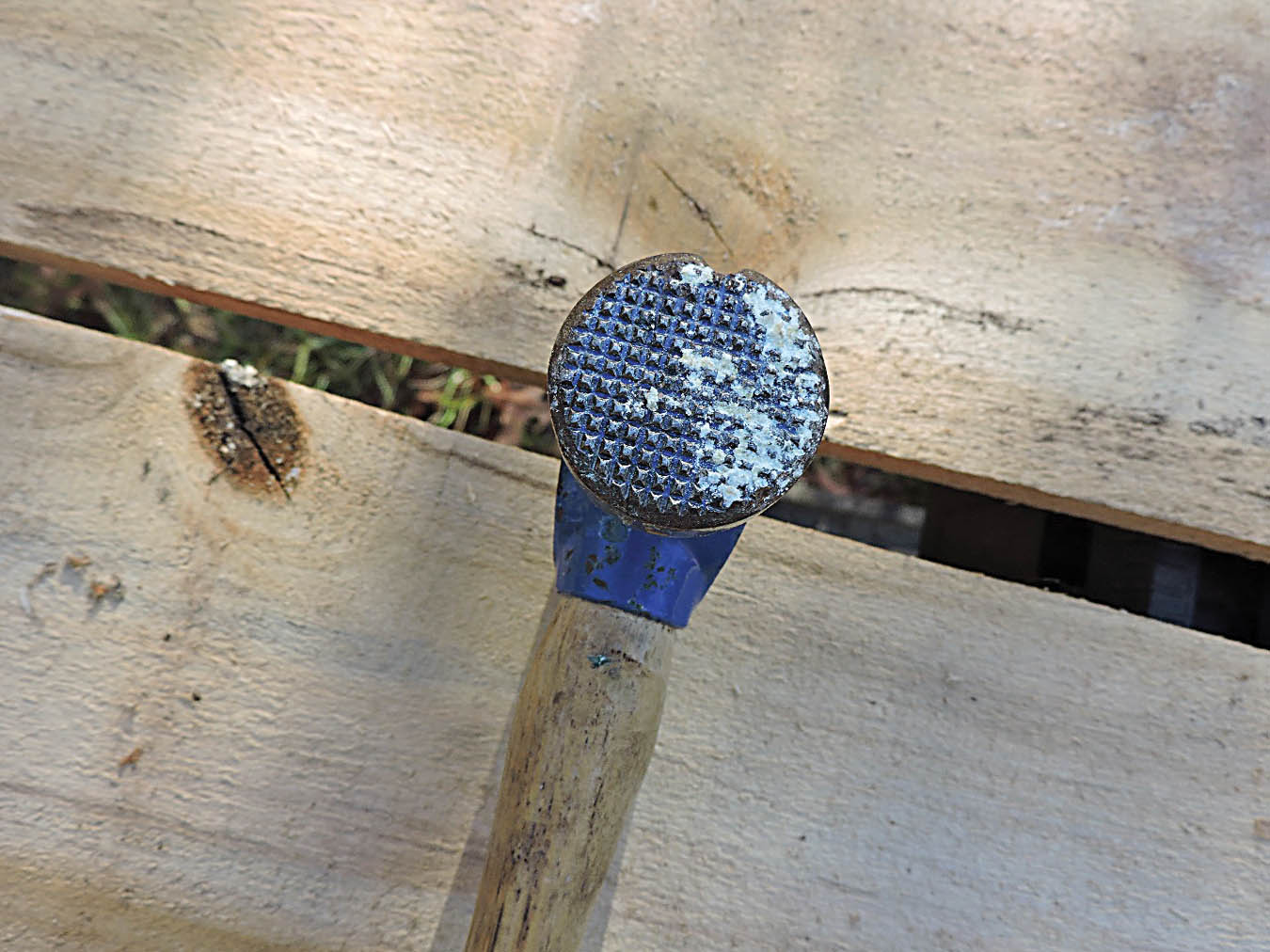
Framing hammers typically have a straight claw and a waffle-faced striking surface.
Framing hammers will also have a large striking face that is flatter than finish hammers and may be textured to reduce the chance of a glancing blow skipping off or bending the nail. Sometimes known as “waffle faced,” these textured faces are only suitable for rough form building or framing because of the marks left when sinking a nail. Indeed the damage to the wood fibers is considerable and can reduce the strength of thinner boards.
Framers will have handles of wood, fiberglass, or metal (in order of comfort and shock absorption) that are proportionally longer than finish hammers to increase the power of the swing. They may have a nail holding feature, the idea being that when working from a ladder a nail can be started and then driven home with one hand while maintaining three points of contact. The same thing can be accomplished by pinching the nail between the fingers curled around the hammer head with the nail head resting against the side or cheek of the hammer.
They will also have a straight or nearly straight claw which is a distinguishing feature of the modern framing hammer. The reason framing hammers have that distinctive straight claw rather than the more effective curved nail puller is simple — framers seldom pull nails. Since the advent in the 1830s of balloon framing as we know it today, with its standard dimension lumber, stud walls, and inexpensive wire nails, the frame of a building is generally covered and out of sight when completed. This being the case, framers do not concern themselves overmuch with purely cosmetic details. When a nail is occasionally bent it is more likely to be beaten flat rather than pulled out. While the straight claw can pull out nails, its real purpose is to be used as a wedge or pry bar to separate boards that have been nailed together as temporary bracing or concrete forms.
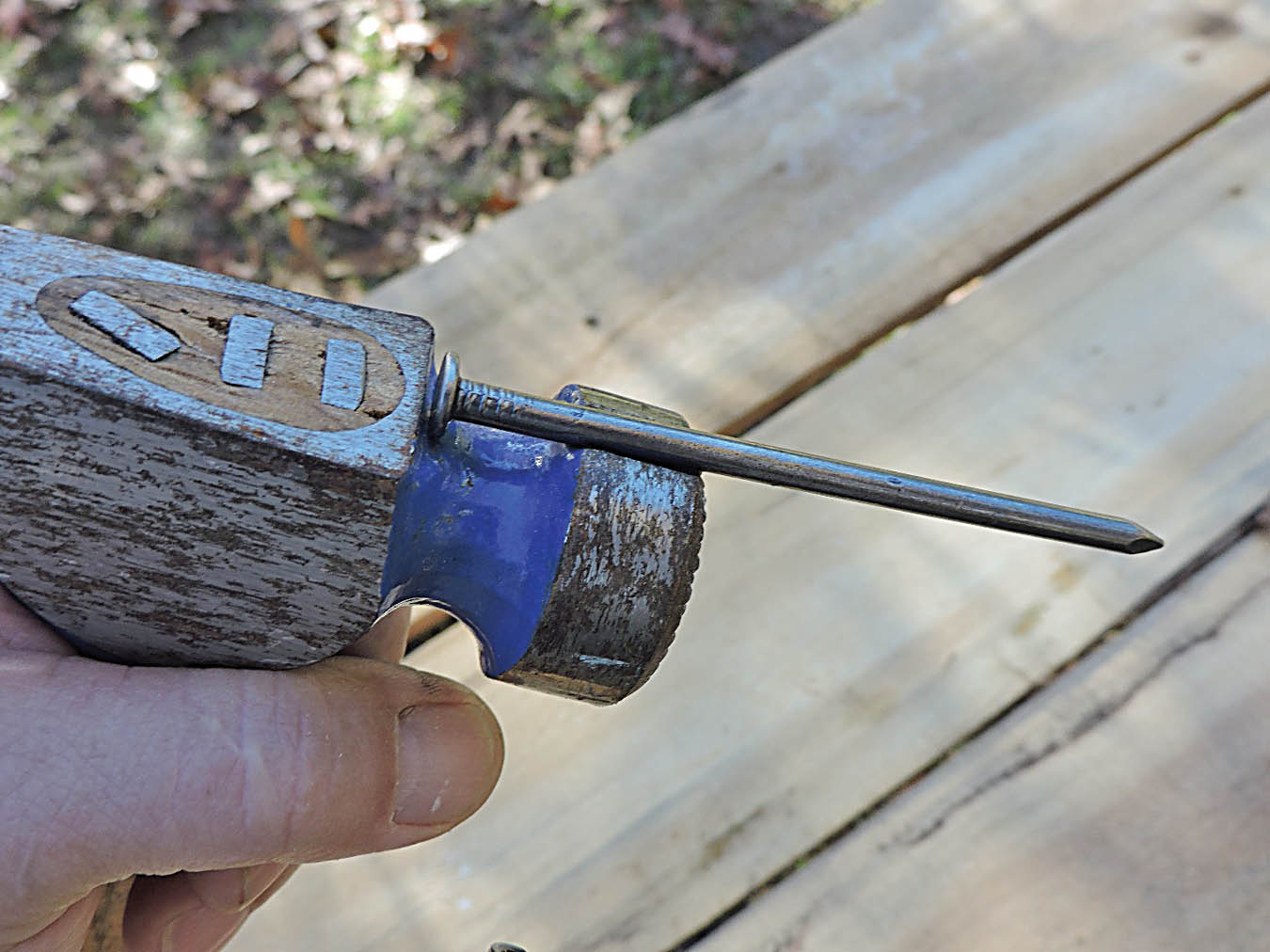
Some framing hammers have a nail holding feature, the idea being that when working from a ladder a nail can be started and then driven home with one hand while maintaining three points of contact.
Straight clawed hammers are sometimes called “ripping hammers” in reference to the claws use in demolition, ripping plaster or sheet rock off walls before beating out studding. Pneumatic nail guns have greatly reduced the use of framing hammers on commercial construction sites, the desynchronized rumble of a good framing crew replaced by a staccato popping and the snarl of air compressors. But on the private homestead where we build stables rather than subdivisions, a quality framing hammer is still the king of construction.
Finish hammers are distinguished by lighter weights, from 4 to 20 ounces, that are generally shorter in proportion to the head, allowing greater finesse in impact force. They have smaller striking faces that are smooth and slightly convex or “bell faced” which can sink a finish nail just below the surface because the bell face contacts the nail head while only lightly or not at all touching the wood.
As I mentioned earlier, the bent or curved claw is a much more effective nail puller. Both styles of claw are “V” shaped to accommodate a wide range of nail diameters. They may also be tapered in section, wider on the bottom and narrowing at the top side which allows the claw to be wedged under nail heads very close to the surface.
The advantage of a curved claw is in its cam or wheel-like leverage smoothly lifting the nail before the hammer’s face contacts the work, preventing further movement. Some of the heavier finish hammers for sale today have a kind of hybrid claw, not exactly straight and not very curved. Like most hybrid things it has some of the advantages of both styles but not the full advantage of either, serviceable but not satisfying.
For the eclectic range of work around the farm it is hard to imagine anything that cannot be done with a 12 to 16-ounce curved claw finish hammer.
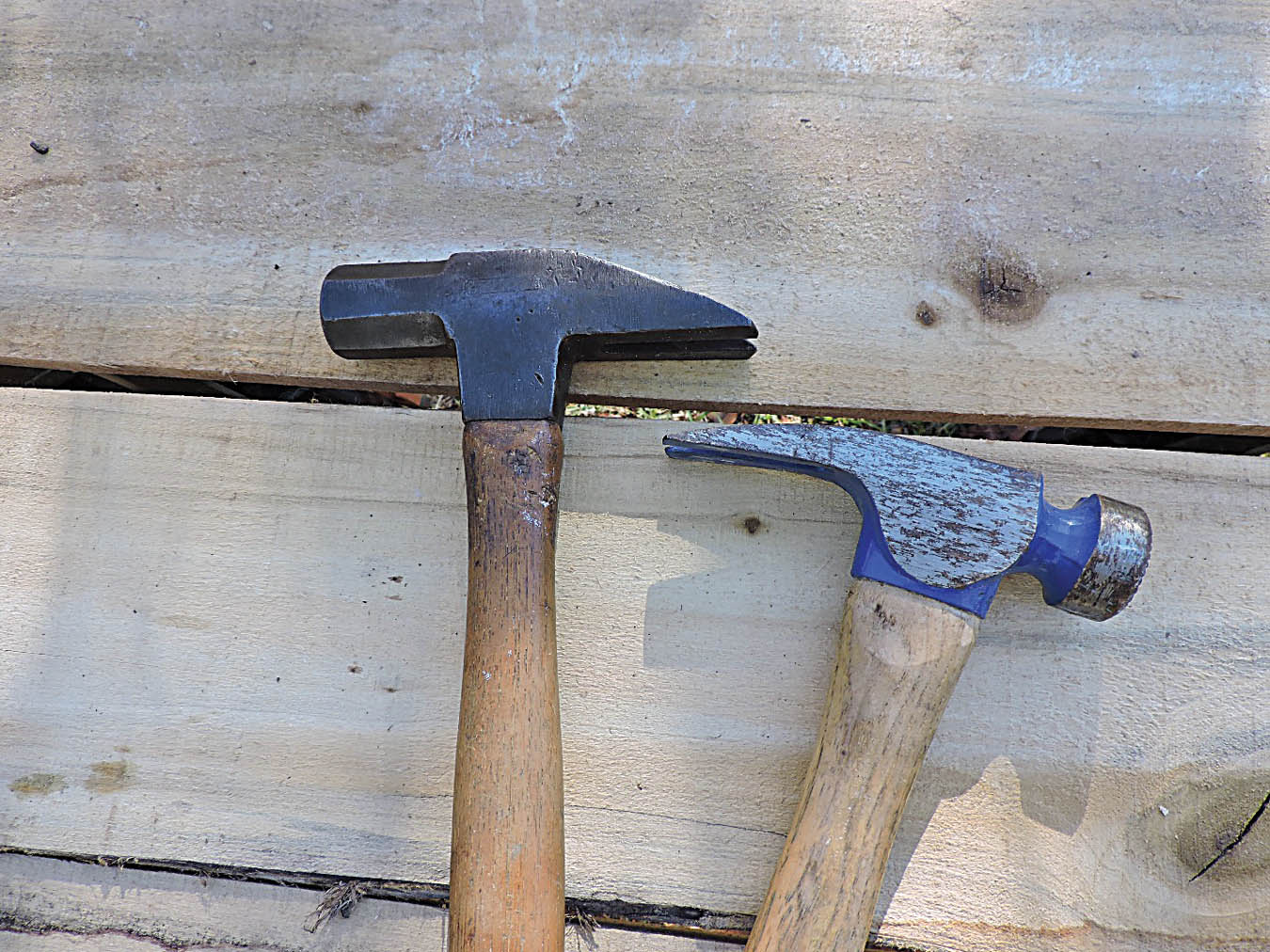
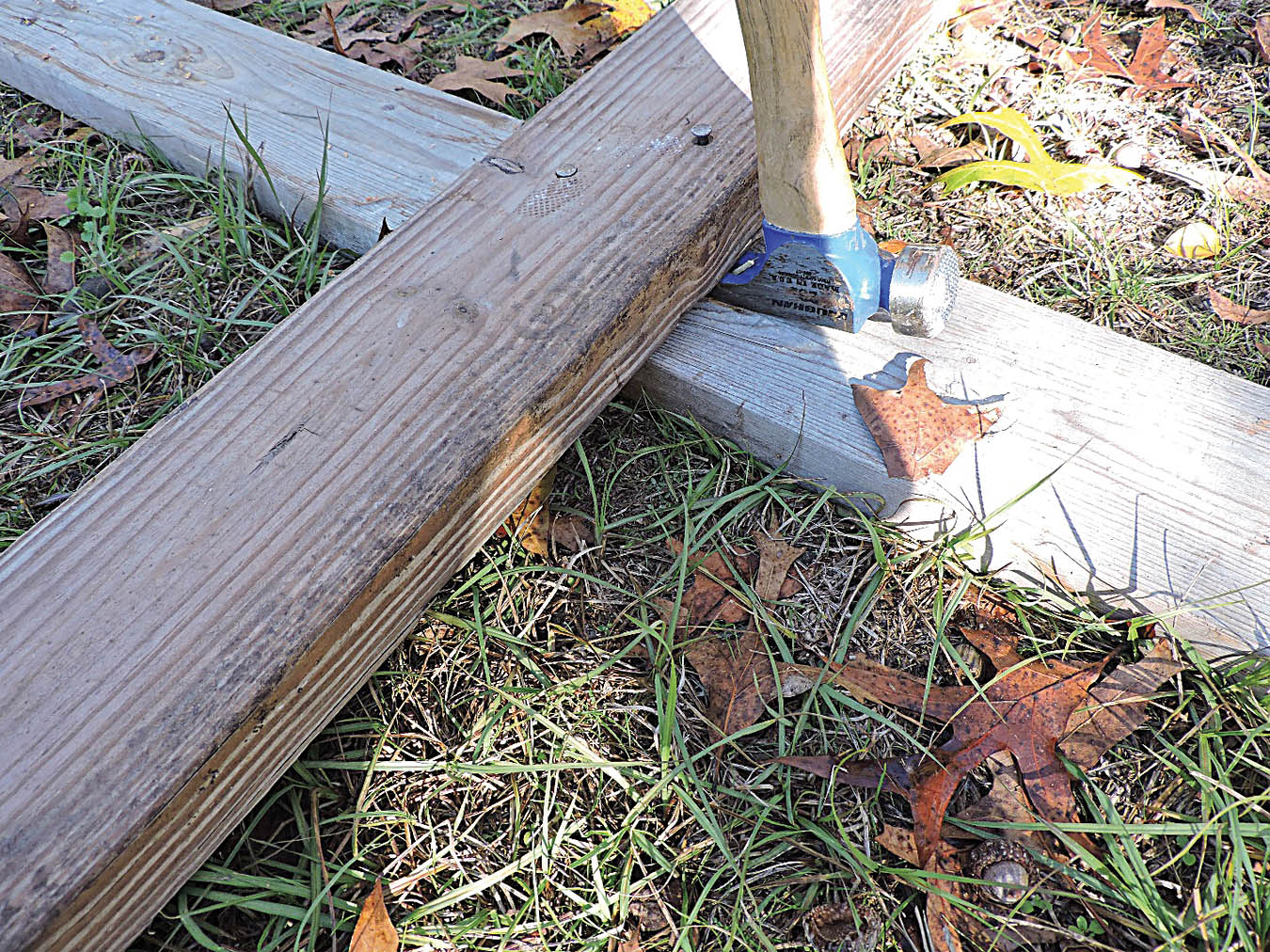
Straight clawed hammers are sometimes called “ripping hammers” in reference to the claws used in demolition.
Handle choices
There are three choices in handle material:
- wood, typically hickory or ash
- fiberglass or similar plastics
- metal, solid or tubular
Wood handles have been the standard for as long as hammers have existed and are still featured on premium tools simply because they provide the best feel in the hand and the best shock absorption of any material. The only complaint about wooden handles you will hear is that they break, which is true, but they are also easy to replace.
Synthetic handles are very common on “homeowner grade” hammers and they have some very good attributes. They are strong, not unbreakable but very tough, and they are unaffected by extremely dry or wet conditions, plus not subject to decay. These synthetic handles have downsides as well, the biggest being their grip-plastic handles will almost always have a rubber like “cushion grip” because they are too slippery to hang on to without one. But that grip is a problem.
The artificial grip does two things in particular that I don’t like. The first is they tend to force the hand into one particular grip rather than allow the user to adjust as they feel necessary, and the second is that over a long day of hammering they will cause hot spots and blisters even on a calloused hand.
A metal handle is something of a misnomer. It is really a metal shaft onto which a handle of some other material is attached. Metal shaft/handles are incredibly durable, one might say indestructible under reasonable use but that is all the good I can say about them. In use the metal acts like a tuning fork and sends the shock of every blow into the hand, tolerable when you’re young but completely unacceptable as age takes its toll. The metal shaft is covered with a grip, perhaps leather or rubber. Either way it may be acceptable for occasional use but not for a barn raising.
Until the early 19th century claw hammers had one glaring defect: the neck of the handle, just before it entered the head, was prone to breaking when heavily stressed by pulling nails.
While nails were handmade and used somewhat sparingly, this was an annoying but accepted flaw, efforts to correct this defect had been tried for centuries with metal straps, either integral or applied, being the best solution.
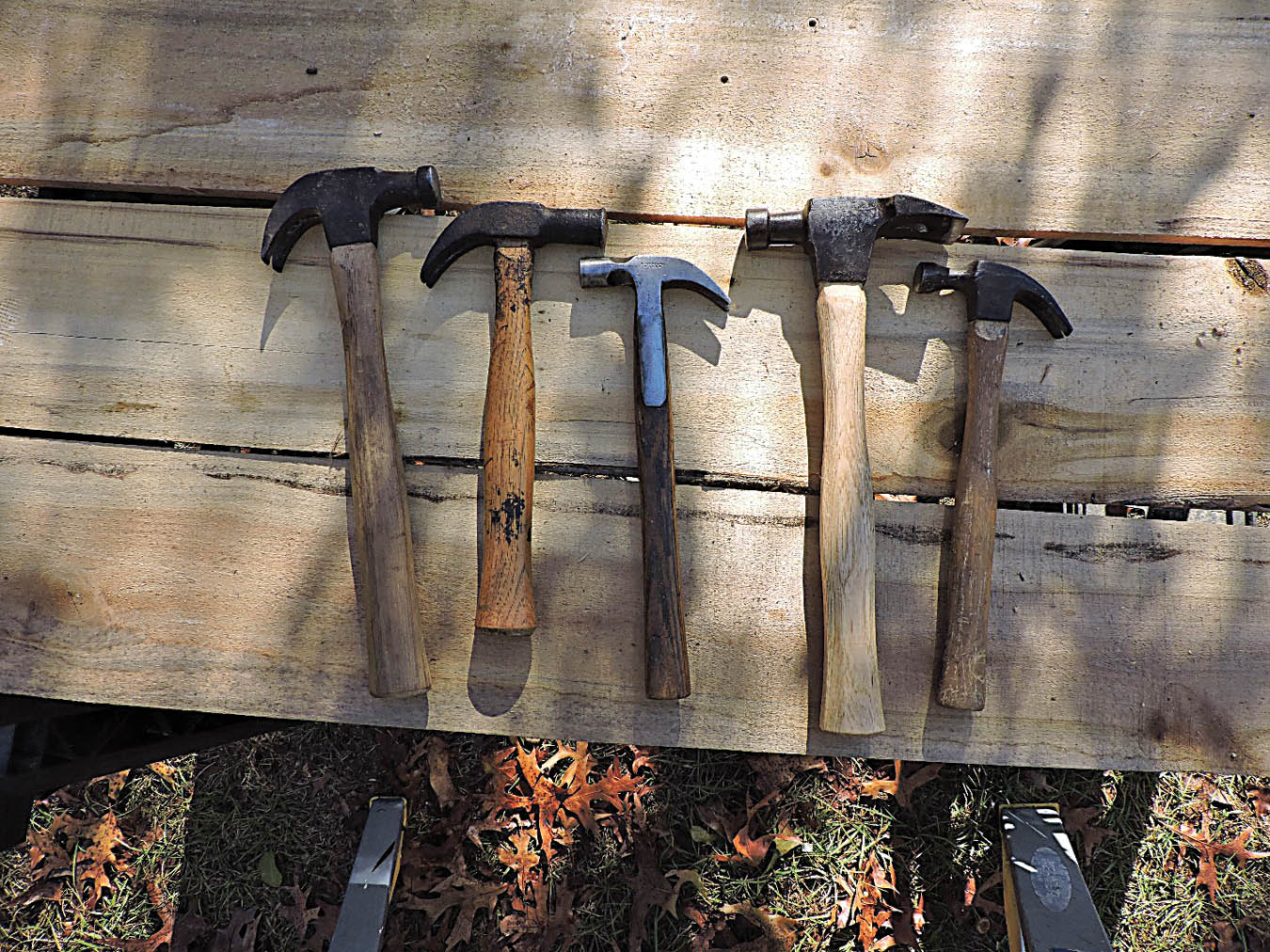
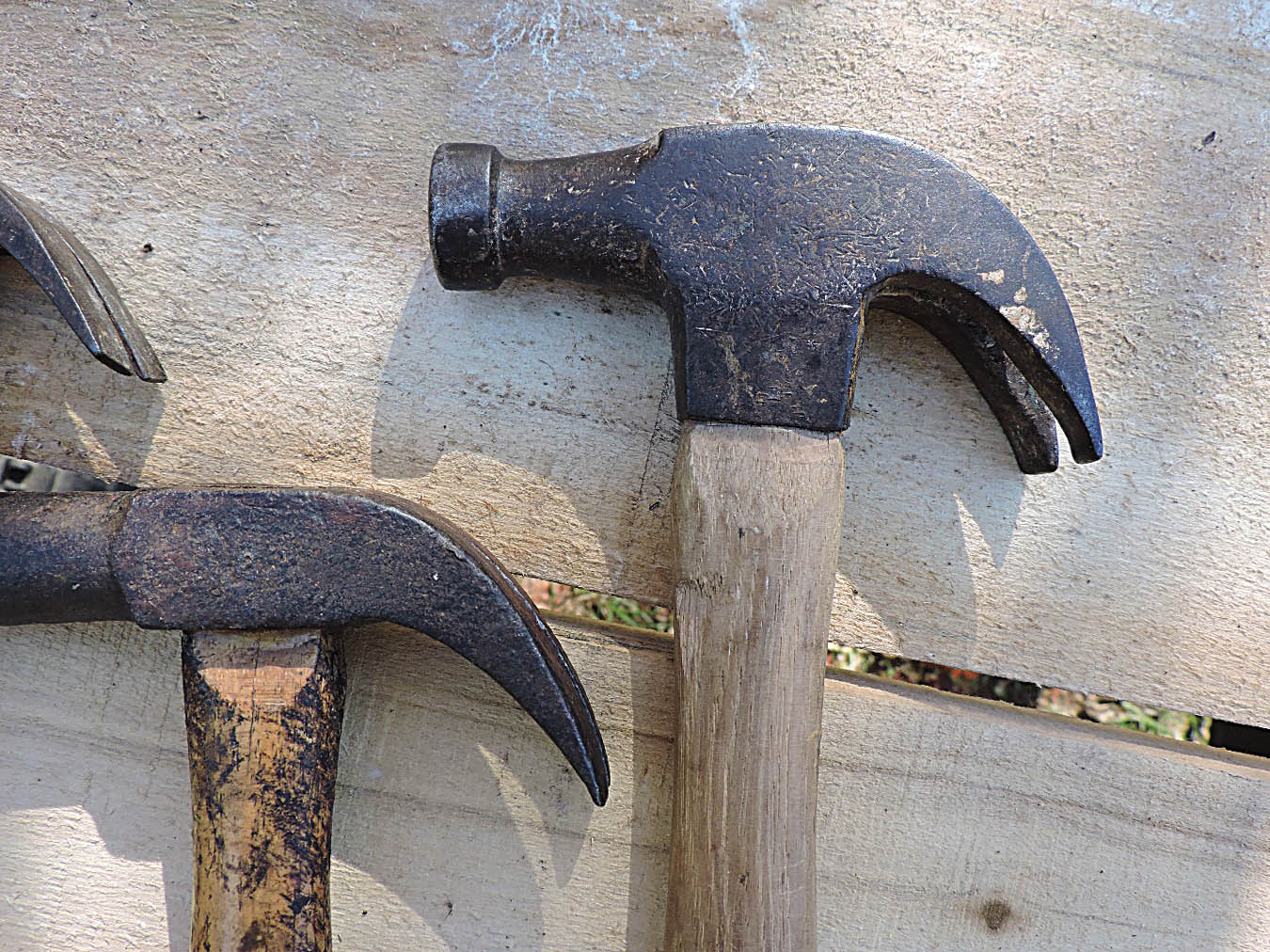
The advantage of a curved claw is in its cam or wheel-like leverage smoothly lifting the nail before the hammer’s face contacts the work.
Unfortunately, these complicated the forging process and added to the cost of the hammer and were difficult for local blacksmiths to make. As nails began to be mass produced and widely used, particularly with the rise of balloon framing construction, a solution was finally found that was effective and easy to manufacture — the Adze eye hammer. Until then hammers had the hole in which the handle was inserted, called the “eye,” punched through the head with an oval punch. This method secured the head well enough but provided very little support to the neck area. The adz eye refers to a wood shaping tool called an Adz which has an elongated rectangular eye that is tapered in one plane to allow the handle to be inserted from the top and yet be easily removed for sharpening.
This eye geometry in the hammer head, with the handle inserted from the bottom and wedged to secure it from the top, created a longer eye and greater surface area contact to support the handle much better. It is almost unheard of for the handle to break while driving nails. Breaks are almost exclusively going to happen while extracting nails because that is when we can apply our whole body weight and the movement either never starts or stops abruptly as the face of the hammer stops on contact with the lumber throwing all the load into the handle neck. Placing a scrap of wood under the head can gain some space for movement and stopping before the face contacts the surface and will help reduce the chance of breaks.
A self-sufficient homestead life requires the right tools. Understanding how tools work makes selecting the right one for the job easy, and it also enables the less experienced person acquire tools based on their needs rather than wasting money on unnecessary or unsuitable equipment.


